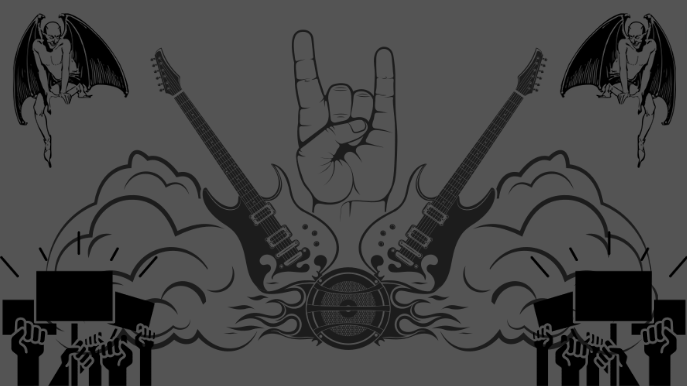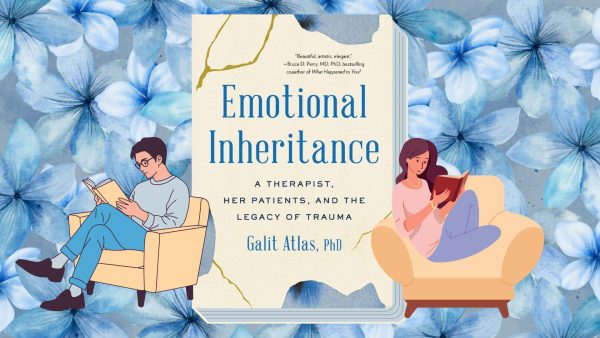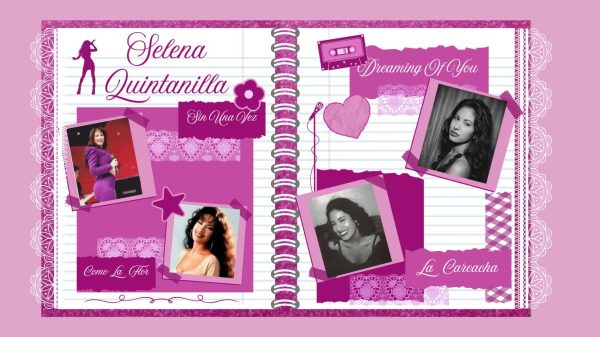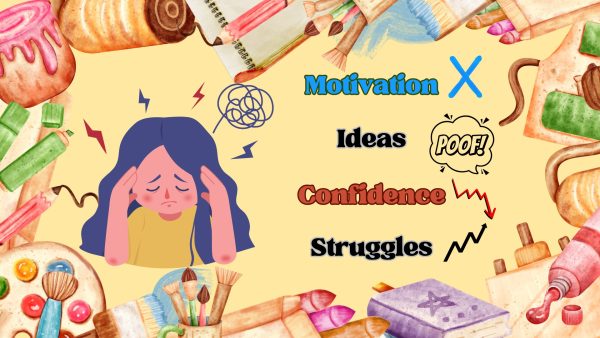Listening to the devil’s music: The history of punk, rock, and metal
The origins and misunderstood stereotypes of people who listen to punk, rock, and metal are explored.
Kaitlyn Figueroa (created with Canva)
Misconceptions about punk, rock, and metal hide the truth about these genres’ origins and relevance.
Vigorous vocals, loud distorted riffs, and stripped-down instrumentals are all characteristics of rock, punk, and heavy metal music. These genres and the subgenres within them carry their own unique characteristics. Listening to this music can become a whole lifestyle for some, including fashion choices, overall demeanor, and socialization style.
This lifestyle comes with assumptions from others who might negatively judge them. People who listen to punk can be automatically stereotyped as horrible human beings because of the expression of the songs they listen to. Each genre has its reasons for expressing rebellion and counterculture.
Punk, metal, and rock music came about from different genres that we know today and have evolved over the years. The main purpose of punk rock was to respond to economic and social issues. Heavy metal started to form after World War II, giving a voice to dissolution. Rock music was invented in the late 1940s to increase the purchase of records from different genres and gradually became its own.
Punk rock is the subgenre of rock that best exemplifies expressing rebellion. There is no specific location or time known that punk began, but it can be traced back to the 60s. Coming from garage rock which had no strict musical rules allowed artists to experiment and eventually create punk rock. Punk rock was a voice for those who stood against society and politics. Artists included their powerful political messages into their songs. It was connected to riots, which is why people who listen to it can be seen as destructive and aggressive. Some great examples of political messages in punk rock songs are “God Save The Queen” by Sex Pistols, “Classroom Rules” by Kill Radio, and “Bleeding” by Ignite.
Rock music emerged in Cleveland, Ohio in the late 40s to the early 50s. It was “inspired by punk’s outsider status…” (Live About). The purchase of big band records was decreasing, and Leo Mintz, owner of Record Rendezvous, noticed that his customers were enjoying themselves when he put on blues music. He decided to change the name “blues” due to the racial tone of it. At the time, the term rock n’ roll was used as a slang term, referring to dancing or making out. Mintz set out to have radios in Cleveland play more rock n’ roll, but they only played music made by white artists. Alan Freed, a jockey from WAKR-AM, was impressed by the reaction of Mintz’s customers to rock n’ roll and began playing it on his afternoon show. Gradually, it became more popular. “[Rock n’ roll] was viewed as a protest against traditional values,” author Brian Clark, in an article for the website Musician Wave, said. This genre was also known for embracing youthful rebellion and sex. Some examples that show this expression are “Animals” by Nickelback, “Bad Girlfriend” by Theory of a Deadman, and “We’re not Gonna Take It” by Twisted Sister.
Heavy metal evolved from several genres including rock and roll, blues, and garage rock. It began in Birmingham, England in 1968, after World War II. The aftermath of World War II left Britain in devastation; goods were scarce, there was major employment shortage, and there was a decline in the economy. Black Sabbath is known as the first heavy metal band and gave voice to all these issues. Heavy metal lyrics spoke up about social issues, economy, and sometimes input anti-religious messages into their songs. “Master of Puppets” by Metallica speaks about drug abuse and how it can take over a person. “Alison Hell” by Annihilator brings up how parents ignore the issues that their children are facing.
Every one of these genres has been criticized in the past due to the meaning behind them. Some people believe that these genres are “the devil’s music” and that people who listen to it are negatively affected. People who fear this music think it has the ability to create psychological and aggression issues in the person who consumes punk music.
Some stereotypes related with punk music and lifestyle are that the person is involved with satanism, they’re outlaws, unsophisticated, or that they are depressed and violent.
A lot of these stereotypes mainly come from how they dress themselves.
Those who find these genres enjoyable can have a hard time embracing it due to all the harsh stereotypes and opinions. They may be thought of differently by family members and friends, which can make it difficult for them to express themselves with those people.
Legacy College Prep sophomore Jamie Gallegos is reluctant to share her music preference with her family.
“Older people think it’s the devil’s music and associated with satan,” she said.
Just because someone listens to punk music and involves themselves with the lifestyle, does not mean that they are involved in Satanism or have destructive personalities.
“Some people [who listen to punk] are still good members of society, with good jobs and families,” Santa Ana College music professor Nick Fuentes, said.
There are many people who listen to punk music everyday who don’t fit into punk stereotypes. There are kind-hearted, respectful, regular people who can listen to punk.
People in the punk community also face statements that their music is negatively affecting their brain and mental health. However, there are studies and research done that prove punk music can actually make a person happier; it increases the happy hormone, serotonin.
In an article from the website Cognition Today, Aditya Suyka said, “A longitudinal study shows that people who grew up in the 80s and 90s with metal as the popular culture lead healthy and fulfilling lives today.”
Listening to punk music has its benefits. Some describe it as an outlet or a way to get away from all the negative things in their lives. It allows them to deal with their emotions and learn how to cope.
“Listening to this, people don’t understand that it is a community. Just like any other community, [it] all develops from a sense of belonging, friendships, and relationships,” Fuentes said.
In the Spotify playlist below, there are songs from all three genres that show how each one has its own expression.

I am the oldest of 3, I am addicted to coffee, and I love listening to music.





































